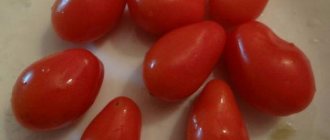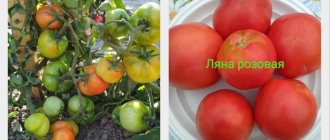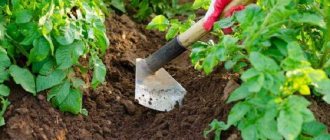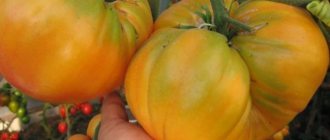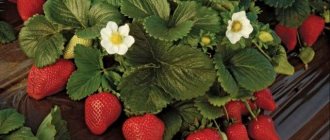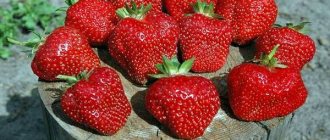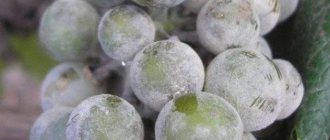Strawberries of the Maxim variety have become widespread in Russia; they can often be found in garden plots and in the vegetable garden. Beautiful, sweet, large berries - this is how you can describe a harvest that will delight the owner of the plot from year to year. You can learn more about the Maxim variety from the description, which provides characteristics, information about yield, growing conditions, as well as truthful reviews from gardeners.
Description of the variety
This strawberry has many advantages:
- Stable harvest, the berries do not become smaller over time.
- Aesthetic appearance.
- High productivity.
- Excellent transportability.
- Excellent taste.
- Long fruiting period.
- The strawberry bushes are large, the roots are thick, and the flower stalks are large. From one bush you can get up to 1 kg of berries.
Important! This strawberry is not afraid of frost and is rarely affected by diseases. Its pulp is dense, so this variety is suitable for obtaining fruits for sale.
a brief description of
Advantages of the variety
- large fruit and productivity are the main qualities that attract gardeners.
- friendly release of berries (10...14 days).
- The berries ripen sweet even in damp, cloudy weather.
- universal use of fruits.
- grows in a permanent place for up to 8 years.
- high frost resistance.
Disadvantages of the variety
- The berries are large, but their taste is far from ideal.
- The rather large seeds are literally noticeable and spoil the impression of eating berries.
- To ensure high yields, careful care and compliance with the rules of agricultural technology are required.
- With insufficient watering, voids form in the fruits.
- Excess moisture in the garden bed causes the appearance of fungal diseases and rot.
The attention of gardeners to the Maxim strawberry variety is fully justified, and in order to obtain the largest possible berries, it is necessary to follow the agricultural techniques for growing large-fruited varieties.
Reproduction
This strawberry is propagated by mustaches and dividing the bush. The first method is considered not very effective, but you can still get up to 7-10 mustaches from one bush.
To do this you need:
- Leave a few bushes once a year for later propagation.
- Cut off all flower stalks from them so that the mustache grows well.
- In July, the formed horns are planted in the chosen place so that the plants become stronger before the cold weather.
Reproduction by division is carried out as follows:
- Choose a healthy bush at the age of 2-3 years.
- Carefully dig it up and shake off the soil from the roots.
- Disinfect a sharp knife in a strong solution of potassium permanganate.
- Cut the bush into 2-4 parts, making sure that each has well-developed roots and 5 leaves.
- Planting material is planted in open ground.
Propagation by seeds for this variety is strictly not recommended. In this case, varietal qualities cannot be preserved.
Important! Before planting, the selected area must be cleared of weeds and dug up several times. To get rid of pest larvae, the soil should be treated with an ammonia solution.
How to plant strawberries (video)
However, it is noted that without the implementation of enhanced and competent care measures and in the absence of optimal weather conditions, the variety does not show its best qualities and indicators. According to gardeners, berries can be subject to negative effects in the form of sunburn, and also need protection from plant parasites and birds.
In order not to lose the material, be sure to save it to your social network VKontakte, Odnoklassniki, Facebook by simply clicking on the button below:
| Print Click Print or CTRL+P to print the page |
Landing
Bushes are planted in spring:
- The area is mulched with compost.
- The soil is covered with agrofibre and holes are made in it.
- Through these holes the bushes are placed into the holes. The material will protect the beds from weeds. If there is no agrofibre, you can first plant the plants and then mulch the ground with dried pine needles.
Before planting, the roots of seedlings should be cut to 1 cm. They should be positioned vertically, and in no case bend upward.
Flaws
- The culture is not adapted to severe winter cold. Not suitable for growing in the Urals, Siberia and the Far East in severe frost conditions.
- The tip of the fruit is not always red.
- There are voids in the pulp.
- Requires care to protect against fungal diseases.
- There is an irregular folded shape, so the berry is longer in width than in length.
Care and feeding
Can be fertilized with mineral and organic compounds. They do this 4 times per season.
The first fertilizing with nitrogen-phosphorus fertilizers is carried out immediately after the plants are released from the shelter, in early spring. This will help build up green mass and strengthen the roots.
It is important not to overdo it with the addition of nitrogen, strictly follow the instructions on the fertilizer package, otherwise the intensity of the color of the berries will not be too pronounced, and the plants may be susceptible to various diseases.
- During the budding period, calcium and potassium are introduced into the soil.
- When the fruits begin to grow, complex fertilizers are applied to help them ripen evenly.
- After the harvest is completed, phosphorus-potassium fertilizers are introduced.
Interesting! In order for the harvest to always be good, you need to remove the tendrils and also regularly update the beds.
Advantages
- Powerful roots make it easy to tolerate lack of moisture.
- Numerous whiskers make breeding simple and not burdensome.
- Frost resistance for the Central region of Russia.
- Relatively good resistance to diseases.
- Large, juicy fruits with dense light pink flesh have a pineapple flavor and dessert aroma.
- They have excellent transportability.
Diseases and pests
To fight slugs, you need to mulch the soil with bark or sawdust. Snails cannot crawl on rough surfaces. It is permissible to use non-woven material. It will additionally protect the plantings from weeds.
To get rid of strawberry mites, you need to do the following:
- Soak the purchased seedlings first in hot water for 15 minutes and then in cold water. A contrast shower will help destroy pests, if any.
- If mites appear during the flowering or ripening period of berries, the plants must be sprayed with garlic or onion peels at the rate of 200 g per 10 liters of water.
- You can also use a 3% solution of Bordeaux mixture or a 70% solution of colloidal sulfur for spraying.
If you plant marigolds and calendula next to strawberries, these plants will scare away the mole cricket.
Recommended primer
Regardless of whether the gardener has chosen the best variety of remontant strawberries or settled on a new one, it is worth taking care of the PH of the soil. The soil should not be acidic or alkaline. The best option for good growth and fruiting is slightly acidic or neutral soil. To check the PH level, you can take a sample of soil to the laboratory or conduct a comparative analysis at home using test strips and soil diluted to a liquid slurry with settled water.
If you believe the reviews left by summer residents on many city forums, we can conclude that the most optimal areas for planting are wetlands, areas located in areas of groundwater and black soil.
To prevent strawberry roots from rotting and the berries to gain the required weight, you should periodically loosen the soil. At the time of fruiting and flowering, it is better to replace this process with mulching.
Reviews from gardeners
Reviews about this variety are mixed, but all gardeners agree that the strawberries are quite large:
Alexander: “The bushes of this variety are very powerful. When we first received huge berries, we were even surprised; we had never seen such strawberries. True, I personally don’t like their sourness, and also the fact that large seeds scratch the tongue.”
Svetlana: “The taste of ripe berries is good, I like that they can sit for several days, so I make jam and freeze strawberries when it’s convenient for me. The children eat with pleasure, but they seem to be more attracted by the gigantic size of these strawberries.”
Konstantin: “When I first saw Maxim berries, I thought they were artificial. It turned out that they were real. I grow them for sale because they can withstand transportation without any problems. I get a good harvest from the bushes. To prevent them from becoming smaller over time, I try to renew the plants more often.”
Origin
Strawberries "Maxim" are considered by many to be an analogue or variety of the variety "Gigantella" (Gigantella Maxim), bred by Dutch breeders and familiar to domestic summer residents since the 80s of the last century. Experienced gardeners explain all possible variations of names (“Maxi”, “Maxim” and “Maxima”) by inaccuracies in the translation of the word “maximum” or by unfair marketing, which makes it possible to sell the same variety under the guise of different ones and at higher prices.
Planting material for this variety is offered by many foreign and domestic producers.
There are some opinions that “Maxim” is a modified and improved version of “Gigantella”, superior to the original variety in some respects: it is distinguished by more uniform ripening of berries and the density of their texture. At one time, “Gigantella” did not “take root” as a commercial variety on the berry market in Europe and the USA; many domestic gardeners quickly abandoned it due to a large number of shortcomings. From the point of view of consumers, the berries, although very large, are far from the most tasty and aromatic, often with internal voids and “evergreen” unripe tops, rather coarse seeds, making the surface rough. For farmers growing berries for sale, the variety turned out to be too “capricious”: requiring intensive agricultural technology, prone to diseases (powdery mildew, root and fruit rots) and pest damage.
Soil preparation
How well the planting site is prepared, so good will be the future harvest.
- The soil should have a neutral or slightly acidic consistency. To reduce acidification per square meter, take 400 grams of limestone or ash and scatter it over previously dug soil.
- Also fertilize the bed with compost or manure and nitrogen, phosphorus and potassium fertilizers. Level the ground thoroughly and remove plant debris.
